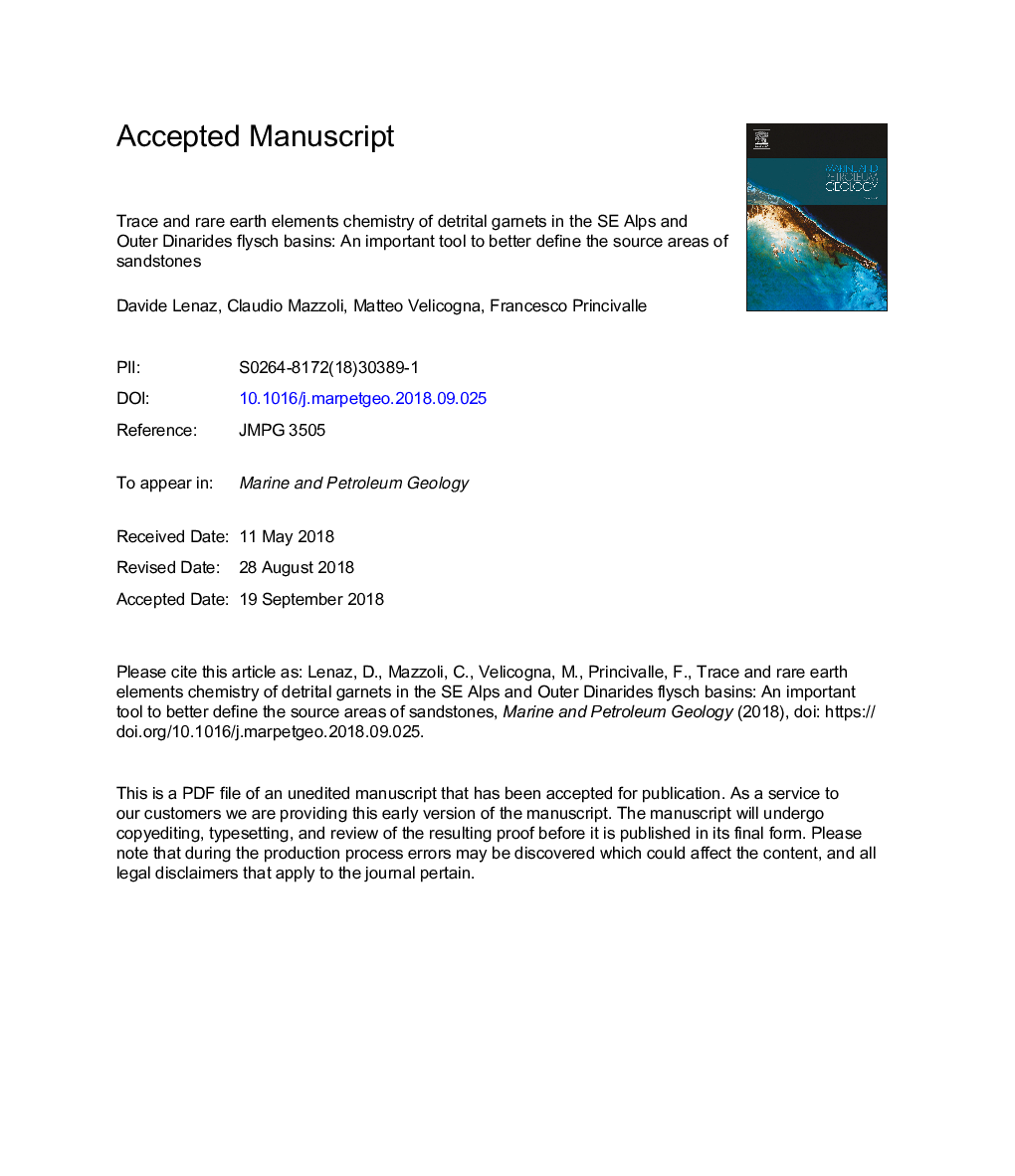| Article ID | Journal | Published Year | Pages | File Type |
|---|---|---|---|---|
| 11033095 | Marine and Petroleum Geology | 2018 | 37 Pages |
Abstract
Garnet is one of the most abundant heavy minerals present in the Cretaceous - Eocene flysch deposits of the Southeastern Alps and Outer Dinarides (Julian, Brkini and Istrian basins). About 300 detrital garnets from the Cretaceous-Eocene flysch deposits of the Southeastern Alps have been analysed by means of electron microprobe and LA-ICP-MS. In the Julian and Istrian basins, supplies are from amphibolite-facies rocks and mafic and ultramafic metamorphic rocks, while in the Brkini basin the latter are almost missing. Moreover, in the Julian and Istrian basins, supplies from skarns, very low-grade metabasites, or from ultra-high temperature metamorphosed calc-silicate granulites are present. Among these different groups, LA-ICP-MS analyses showed that trace element content can be very different in almandine-rich garnets from the different sources. In particular, the source that supplied the Julian Basin is significantly different from that of the Istrian Basin. From the Cretaceous to the Palaeocene the main supplies of Bi-type garnets derived from an area where feldspar-free garnet-bearing rocks were exposed. Successively, Bi-type garnets were supplied from an area where feldspar-garnet-bearing rocks were exposed. The presence of garnets from feldspar-free garnet-bearing rocks in the Brkini and Istrian basins can be ascribed to both recycling of material from the Julian Basin as well as direct input from the same areas that supplied the Julian Basin.
Keywords
Related Topics
Physical Sciences and Engineering
Earth and Planetary Sciences
Economic Geology
Authors
Davide Lenaz, Claudio Mazzoli, Matteo Velicogna, Francesco Princivalle,
